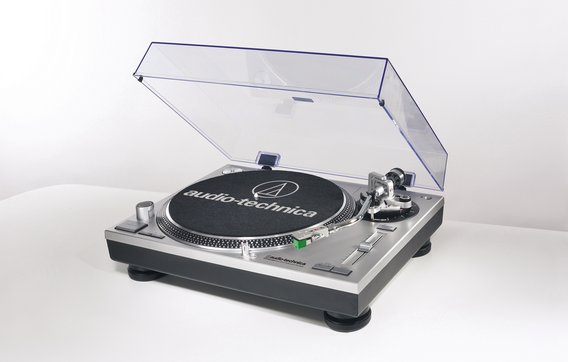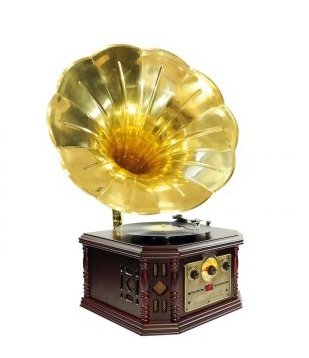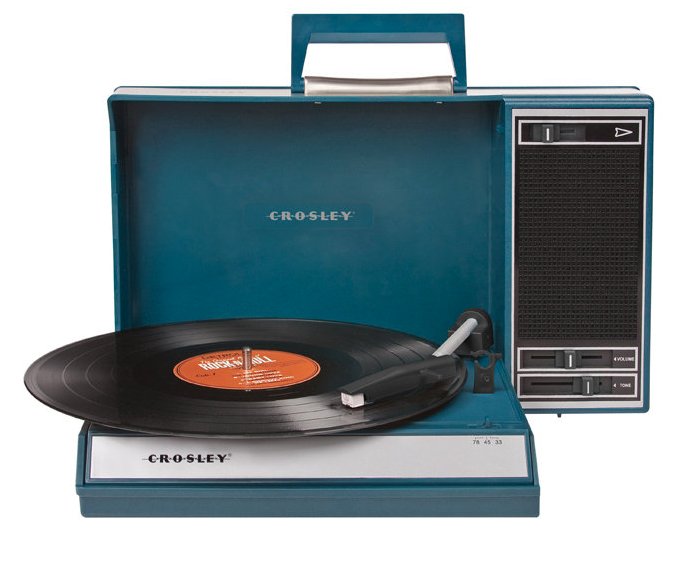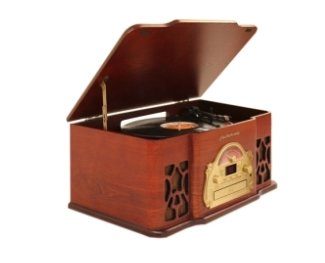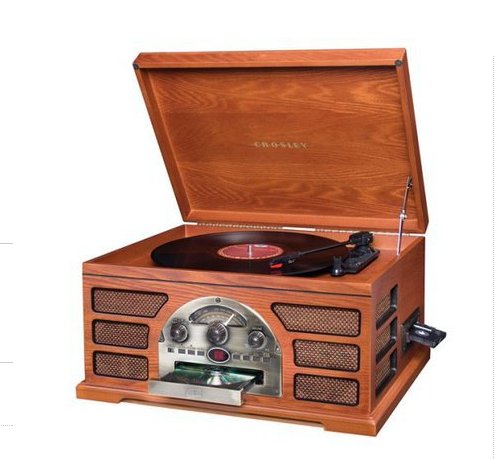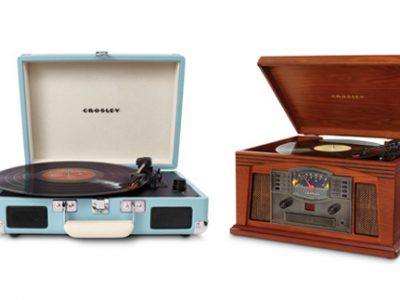Which type of records will you be playing? Scott Shaw, an audio solutions expert with Audio-Technica explained that most records are one of three types, “78s,” “33 1/3s” and “45s,” which are named after the time it takes them to spin, or revolutions per minute (RPM). While many new players will be compatible with all three, some will not, so consult the manual to make sure before you take it home.
How has the technology changed over the years? The short answer? Not much, at least since the 1970s. Crosley Radio’s Director of Product Development, Ty Mattheu says that motor manufacturing has improved, making the sound more consistent, in addition to new technologies in parts, like the introduction of a carbon fiber arm that won’t wear down your records. Shaw confirms that the biggest improvement to turntables is the ability to connect to USB enabled devices in addition to an RCA connector. This allows users to potentially convert their vinyl collection to MP3 digital files to preserve them, since records can get scratched or damaged, but still retain the sound quality. Many current models also have AM/FM radio, a casette deck and CD player.
Which style should you buy? Mattheu explains that some models have internal speakers and an amplifier, while others are designed to plug into your at-home stereo system. While your stereo’s speakers are probably larger and will produce a better sound, units with their own speakers are portable and more cost-efficient. Also, many Crosley models are made from wood, and Mattheu tell us that the advantage is that this material is a natural shock-absorber in addition to being naturally acoustic, allowing the music to sound warmer and richer. Of course plastic doesn’t do quite as good of a job, but if you prefer portability, these units are very light-weight.
How do you maintain your player? Luckily modern players are mostly maintenance-free, but you may have to replace your needle, or stylus. Mattheu says Crosley units use a diamond needle, and you should be able to get 10,000 hours of playing time before it wears out. Also, with some models it is possible you may have to change the rubber belt which can stretch or wear, but this is also quite simple. Shaw also recommends a record care kit to prolong the life of your vinyl as well as using a soft brush to dust the needle occasionally. These tips will keep your record player working well for years to come.
To see some of the record players models that are on the market now, see images below.

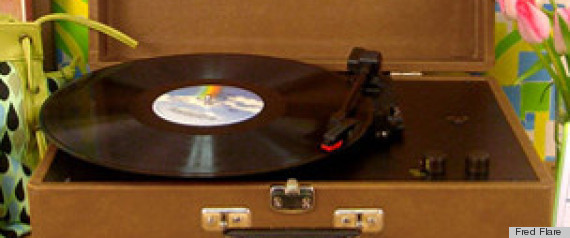 While there have been several new forms of media introduced into the market over the last few decades to improve the way we listen to and record music, vinyl records haven’t gone extinct, and there is good reason behind that. This format provides a sound that is unlike any other, and is still considered an excellent source for quality audio. Whether you are an audiophile or a vinyl novice, we have consulted the experts in the field to bring you a
While there have been several new forms of media introduced into the market over the last few decades to improve the way we listen to and record music, vinyl records haven’t gone extinct, and there is good reason behind that. This format provides a sound that is unlike any other, and is still considered an excellent source for quality audio. Whether you are an audiophile or a vinyl novice, we have consulted the experts in the field to bring you a 
